Redesign for a Local Business
Secret Caverns
Project Overview
Challenge
Revise an outdated local attraction
Secret Caverns is a local tourist attraction in rural upstate New York. Old limestone formations have created an awe-inspiring cavern that was first discovered by some intrepid bovine in the late 1920s. A highlight of the cavern is a 100ft waterfall visitors can view at the end of the tour.
They have an outdated online presence with little to no advertising elsewhere. They are looking for a responsive design to keep up with the current times and to stay competitive with other similar attractions in the area.
Objectives
Create a Responsive Design
Create a responsive site that allows customers to view the attraction’s offerings from other than just a desktop
Redefine outdated branding
Scope
Responsive Website, Branding
Role
Sole UX Designer (Research, Visual Design, Interaction Design, User Testing)
Tools
Figma, Adobe Photoshop, Procreate, Whimsical
Duration
2 weeks (80 Hours)
Design Process
Empathize
Research Goals
Methodologies
Empathy Map
User Persona
Define
POV Statements + HMW Questions
Brainstorming
Business + User Goals
Ideate [Part I]
Product Roadmap
Site Map
UI Requirements
Task + User Flows
Sketches
Responsive Wireframes
Prototype
Mid Fidelity Prototype
Test
Usability Testing
Affinity Map
Priority Matrix
Ideate [Part II]
Branding
Style Guide
High Fidelity Wireframes



